Ever found yourself feeling a bit swamped by the intricate art of fly fishing? You’re certainly not alone. I’ve walked in those waders too, and after countless sunrises spent perfecting my cast and poring over professional advice, I’m on hand to guide you through this exhilarating voyage.
This all-inclusive blog post is brimming with first-rate tactics that will empower you to handle fundamental fly-fishing techniques like a pro. Ready to reel ’em in? Let’s make a splash!
Key Takeaways
- Choosing the right rod, reel, and line is crucial for successful fly fishing. Consider factors like length, material, action of the rod, type and size of reel, weight of your reel, and matching it with your rod.
- An affordable fly box with a variety of flies is sufficient when starting out in fly fishing. Aim for insect imitations and baitfish patterns to have different options on the water.
- Practice regularly to improve casting techniques and control the rod tip for delicate presentations. Seek guidance from experienced fly fishermen to learn valuable techniques and advice on choosing the best flies.
- Prioritize safety by wearing appropriate clothing and gear, being aware of potential hazards like slippery surfaces or fast-moving water. Study fish habits to increase chances of catching fish by choosing optimal fishing spots.
Picking the Right Equipment
Choosing the right rod, reel, and line is crucial for a successful fly fishing experience.
Choosing the right rod, reel, and line
I always say that choosing the right rod, reel, and line is key to fly fishing. Let’s dive into how to pick these.
- Take a look at different fly rod models. Each model has its own unique design.
- Pay attention to the rod’s length and materials when buying a new one.
- The action of the rod also matters. It’s the way it bends and moves.
- Now let’s talk about reels! Consider what type of fish you’re going after.
- The size of the reel is important too. Make sure it fits your hand well.
- Don’t forget about the weight of your reel! It should match with your rod to handle the line best.
- A heavier line might tire you out but don’t worry! With practice, you can handle it all day.
- Picking a fishing line may seem hard, but think about your target fish and what kind of rod and reel you have.
Getting an inexpensive fly box with an assortment of flies
Let’s talk about the fly box now. First, don’t spend too much on it. An affordable fly box serves you just fine when starting out. This tiny tool organizes your flies in one easy spot.
The trick lies in what you pack inside. Aim for an assortment of flies! Stock up with insect imitations and baitfish patterns alike. This mix gives you options to try different tactics on the water.
As time goes by, you’ll get more flies. Then, consider getting additional storage boxes to stay organized. For example, a dry fly box is great for floating flies with hackle tied to stand.
In short, an economical fly box packed with a diverse range of flies sets you off right in your fly fishing journey.
Investing in the necessary tools
I buy the right tools for fly fishing. A good fishing rod, reel, and line top my list. I keep extra fishing backing in case something goes wrong. For the best catch, a leader and tippet are key parts of my gear.
I also get floatant to help keep my flies floating on the water surface. Waders save me from getting wet while in shallow waters. To safely handle fish, I use a soft net that won’t hurt them or their scales.
A handy vest is what I wear to hold all these tools close by.
Essential Tips for Fly Fishing Basics Growth
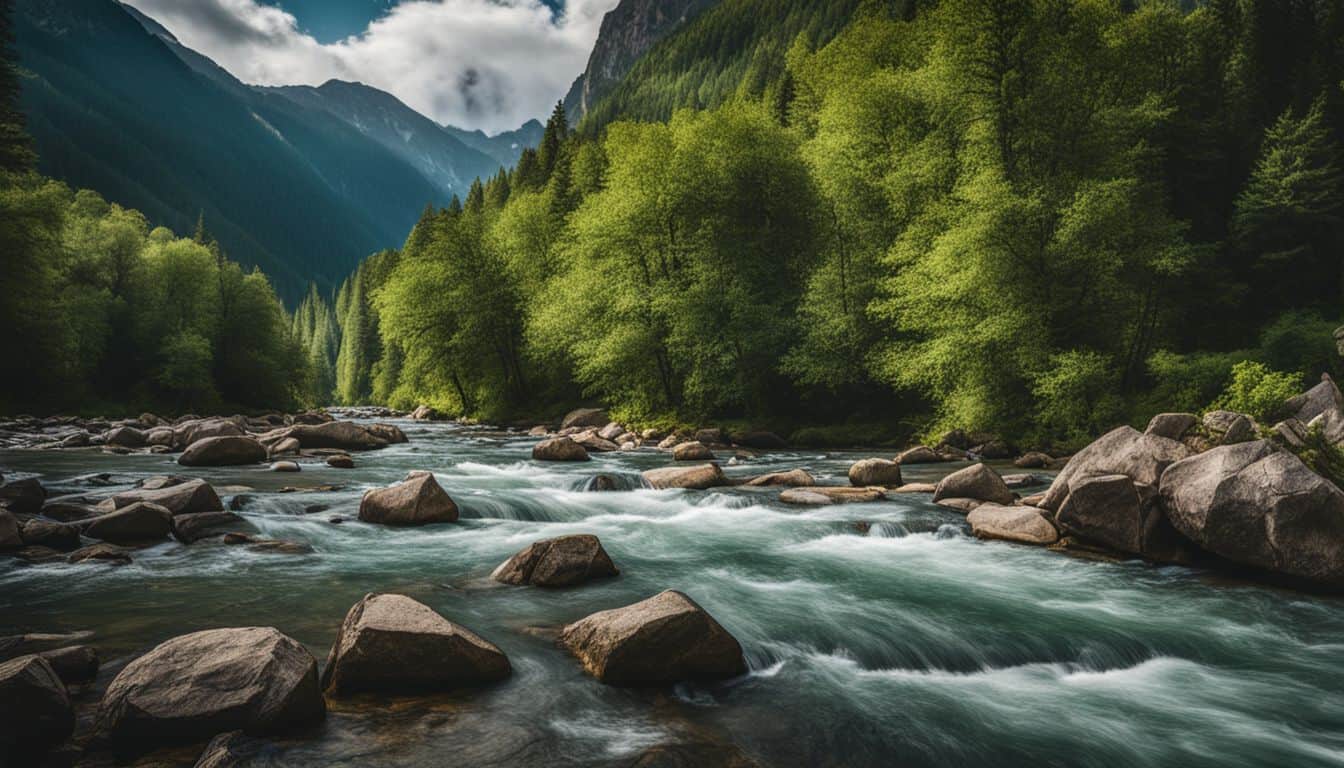
As a beginner in fly fishing, there are some essential tips that can help you improve and grow your skills. First off, it’s important to practice regularly. Spend time practicing your casting techniques so that you can become more accurate and efficient with your casts.
One tip is to focus on controlling the rod tip for delicate presentations, which will help you land those tricky fish. Another tip is to seek guidance from experienced fly fishermen.
They can teach you valuable techniques and give advice on the best flies to use for different situations. Safety should always be a priority when fly fishing, so make sure to wear appropriate clothing and equipment and be aware of potential hazards like slippery surfaces or fast-moving water.
Once you feel comfortable with the basics, it’s all about landing some fish! Study fish habits and choose the right fishing spots based on their behavior. Learn effective techniques for hooking and reeling in fish to increase your chances of success.
Most importantly, remember to have fun! Enjoy the relaxation of being out in nature while appreciating its beauty. And if you’re looking to enhance your experience even further, consider exploring additional accessories like waders or float tubes that can make your fly fishing adventures even more enjoyable.
Practice Makes Perfect
To become proficient in fly fishing, dedicated practice is crucial. Mastering casting techniques and controlling the rod tip for delicate presentations takes time and repetition. Don’t miss out on valuable tips to improve your skills!
The importance of practicing casting techniques
Practicing casting techniques is vital for improving your fly fishing skills. It’s a skill that requires fine motor control, and the more you practice, the better you’ll get. Developing muscle memory is crucial because it helps you perform smooth and accurate casts consistently.
By practicing regularly, you can hone your technique and make adjustments as needed to achieve greater success in fly fishing. One helpful tip is to focus on using just the tip section of the rod during practice sessions.
This allows you to focus on perfecting your casting motion and increasing distance in your casts. So, don’t underestimate the importance of practicing casting techniques – it’s a key component of becoming a skilled fly fisherman!
Learning to control the rod tip for delicate presentations
Controlling the rod tip is crucial for achieving delicate presentations in fly fishing. By adjusting the angle between the rod tip and your target, you can place your fly exactly where you want it.
This skill is part of the Five Essentials that every skilled fly caster should learn and practice. Troubleshooting your fly casting technique will help ensure a straight landing of your fly line, leading to accurate presentation and increased chances of catching fish.
Practice controlling the rod tip to master this important aspect of fly fishing.
Seek Guidance from Experts
Learn from experienced fly fishermen who can provide valuable insights and advice on the best flies to use. Their expertise will help you improve your techniques and increase your chances of catching fish.
Find out more about seeking guidance from experts in fly fishing basics growth in our latest blog post!
Learning from experienced fly fishermen
One of the most effective ways to improve your fly fishing skills is by learning from experienced anglers. Seeking guidance from experts in the field can provide you with valuable insights and techniques that will help you become a better fly fisherman.
By consulting with seasoned anglers, you can gain knowledge about successful fishing strategies, such as understanding fish behavior and choosing the right flies for different conditions.
Their expertise can also help you refine your casting techniques and make adjustments to improve your overall performance on the water. Whether it’s joining a local fly fishing club or hiring a guide for a day on the river, learning from those who have mastered their craft is an essential step in growing as a fly fisherman.
Asking for advice on the best flies to use
When it comes to fly fishing, choosing the right flies can make a big difference in your success. That’s why it’s important to seek guidance from experts who have local knowledge and experience.
They can recommend the best flies to use for your specific fishing location and target species. Don’t hesitate to ask for advice on fly selection when you’re planning your next fishing trip.
By getting expert advice, like which flies are most successful for certain species or locations, you’ll increase your chances of having a productive day on the water. Remember, experienced fly fishermen have valuable knowledge that can help you catch more fish!
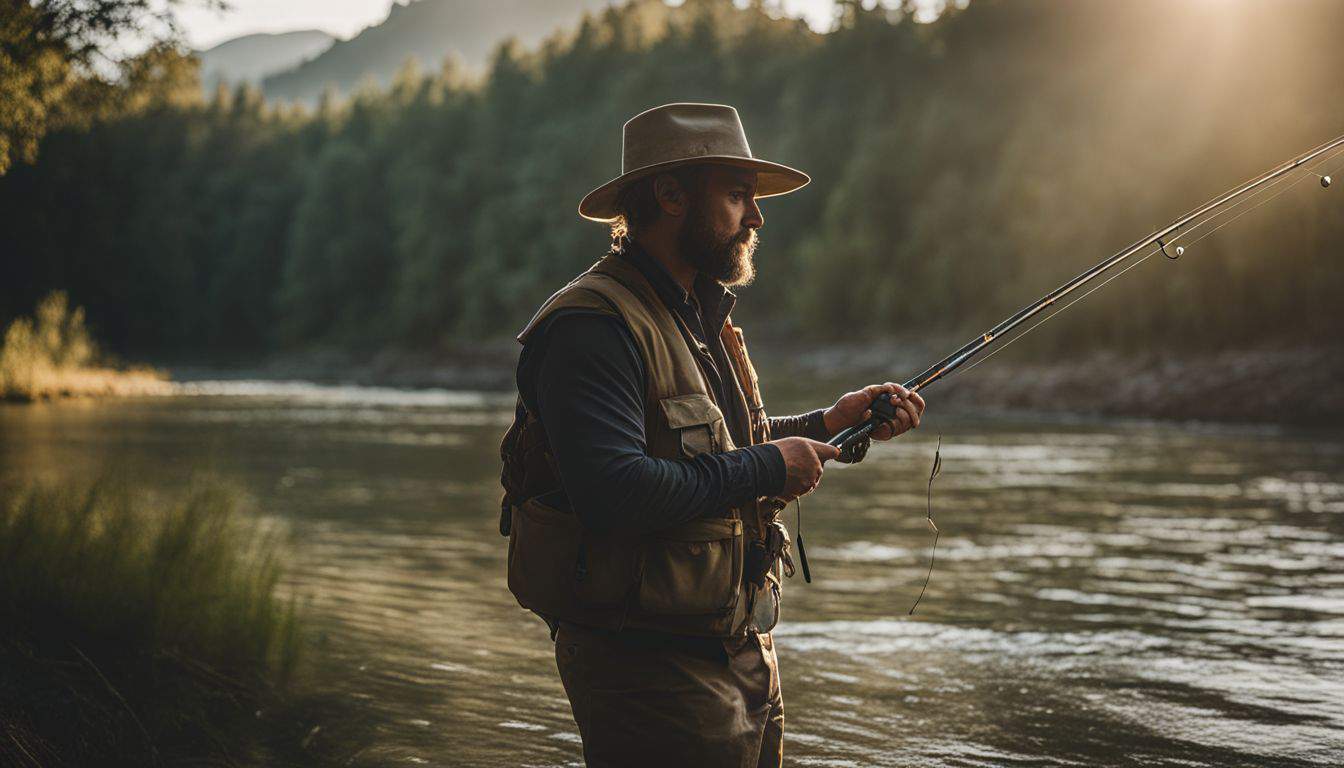
Safety First
When fly fishing, it is crucial to prioritize safety. By wearing appropriate clothing and gear, like a life jacket and non-slip boots, you can minimize the risk of accidents. Additionally, being aware of potential hazards in your surroundings, such as fast-moving water or rocky surfaces, will help keep you safe during your fishing adventures.
To learn more about essential safety tips for fly fishing basics growth, [click here].
Ensuring safety while fly fishing, including wearing appropriate clothing and equipment
When fly fishing, it’s important to prioritize safety. Here are some essential tips to ensure your safety while enjoying this activity:
- Wear protective eyewear to prevent accidental hooking and protect your eyes.
- Choose quality waders that fit well and provide proper insulation in different weather conditions.
- Dress appropriately for the weather, wearing layers and waterproof clothing when necessary.
- Make sure children wear appropriate footwear for safety and comfort during fly fishing outings.
- Have necessary equipment like rain gear, hip boots, and identification badges for added safety.
- When representing a fishing organization, wear professional attire along with identification.
Being aware of potential hazards, such as slippery surfaces and fast-moving water
When fly fishing, it’s important to be cautious of potential hazards like slippery surfaces and fast-moving water. These can lead to accidents and even drowning if not careful. Always be aware of your surroundings and take extra caution when walking or wading near streams or rivers.
The water may have unseen hazards that could cause you to slip or lose your balance. Understanding water safety techniques and being mindful of these risks will help keep you safe while enjoying your fly fishing adventure.
Stay alert, be cautious, and enjoy the experience!
Land Some Fish
Learn tips for increasing your chances of catching fish, from studying their habits to choosing the right fishing spots. Discover techniques for hooking and reeling in fish that will make your fly fishing adventures even more thrilling!
Tips for increasing chances of catching fish, such as studying fish habits and choosing the right fishing spots
To increase your chances of catching fish, it’s important to understand fish habits and choose the right fishing spots. Here are some tips:
- Study fish habits: Take the time to learn about the behavior of the fish you want to catch. This will help you determine when and where they are most likely to be found.
- Choose optimal fishing locations: Investigate potential fishing spots in your area and look for features that attract fish, such as underwater structures or areas with abundant food sources.
- Seek advice from experts: Consult experienced fishermen who have knowledge of the area or specific fish species you’re targeting. They can provide valuable insights on where to find fish and what techniques work best.
- Use strike indicators effectively: When fly fishing, using a strike indicator can help detect subtle strikes from fish. Proper placement and adjustment of the indicator can greatly improve your chances of hooking a fish.
- Adjust positioning for success: Don’t be afraid to move around and reposition yourself when fishing. Changing your location or angle can increase your chances of landing a fish, especially if you’re targeting trout.
Techniques for hooking and reeling in fish
To successfully hook and reel in fish while fly fishing, it’s essential to use the right techniques. One key technique is setting the hook firmly in the fish’s mouth by pulling the line.
This ensures a secure connection between your fly and the fish. Once you’ve hooked a fish, it’s important to keep tension on the line by keeping it tight. This helps you maintain control over the fish and prevent it from escaping.
When playing big fish, remember to apply pressure in the right direction while using proper technique. And always make sure your reel drag is set properly and hold your rod tip high enough for effective handling of larger fish on a fly rod.
Have Fun!
Embrace the joy of fly fishing, immerse yourself in nature’s beauty, and experience the ultimate relaxation. Discover how to make every moment on the water a memorable adventure – read on for tips to enhance your fly fishing journey!
Emphasizing the enjoyment and relaxation of fly fishing
I love fly fishing because it brings me so much joy and relaxation. It’s an activity that allows me to escape from the hustle and bustle of everyday life and find serenity in nature.
There’s nothing quite like casting my line into a peaceful river or lake, surrounded by the beauty of the outdoors. The sound of the water, the feel of the rod in my hands, and the anticipation of catching a fish all contribute to a sense of tranquility that I can’t find anywhere else.
Fly fishing truly is my therapy, my recreational activity that brings me immense pleasure and enjoyment. So if you’re looking for a leisurely hobby that helps you unwind and appreciate nature’s wonders, I highly recommend giving fly fishing a try!
Appreciating the beauty of nature and the outdoors
When I’m out fly fishing, one of the things that brings me the most joy is appreciating the beauty of nature and being outdoors. There’s something truly magical about standing in a serene landscape, surrounded by lush greenery or crystal-clear waters.
It’s like stepping into a whole new world where time slows down and all that matters is the present moment. As I cast my line into the water, I take a moment to soak in my surroundings—the sounds of birds chirping, the gentle rustle of leaves, and maybe even catching sight of a majestic eagle soaring above.
Being immersed in nature like this not only brings me peace but also makes me feel more connected to our environment. It reminds me why it’s important to be mindful of preserving these habitats for future generations to enjoy.
Additional Accessories
Explore the world of optional accessories that can enhance your fly fishing experience, from waders to float tubes. Find out how these accessories can take your fishing game to the next level and make your time on the water even more enjoyable.
Dive into this section to discover all the possibilities!
Exploring optional accessories that can enhance the fly fishing experience, such as waders and float tubes
When fly fishing, there are some optional accessories that can make your experience even better. Here are a few to consider:
- Waders: Wearing waders allows you to stand in the water while staying dry. It gives you more access to different fishing spots.
- Float tubes: If you want to get closer to the fish, float tubes are a great option. They allow you to float on the water and reach areas that are harder to get to from the shore.
- Floatant: Floatant is a substance that helps your flies float on the surface of the water. It’s especially useful when fishing with dry flies.
- Leaders: A leader is a clear line that connects your fly line to your fly. It helps control the presentation of your fly and makes it look more natural in the water.
- Fly fishing vest: A vest with lots of pockets is essential for carrying all your gear and accessories while keeping them easily accessible.
- Nail knot tool: This tool helps tie knots securely when attaching leaders or tippets to your fly line.
- Scissor clamps: Scissor clamps are handy for cutting fishing line, removing hooks, and other tasks while on the water.
- Stream thermometer: Knowing the temperature of the water can give you insights into where fish might be located and what they might be feeding on.
Understanding their purpose and benefits
Fly fishing accessories are an important part of the fly fishing experience. They serve a specific purpose and offer a range of benefits for anglers. From fly boxes to tools like nippers and hemostats, these accessories enhance your ability to fish effectively.
They help you organize your flies, trim your line, and handle fish safely. Additionally, accessories like floatant and tippet can greatly improve your chances of success by keeping your flies buoyant on the water’s surface and providing extra strength to your leader.
Other essential accessories include waders, nets, polarized sunglasses, and hats. These items not only protect you from the elements but also enhance visibility and reduce glare so you can see better when casting or spotting fish.
Expand Your Knowledge
Continue to learn and improve in fly fishing through books, videos, online resources, and joining fly fishing communities. Expand your knowledge and enhance your skills to become a better angler.
Happy fishing!
Continuing to learn and improve in fly fishing through books, videos, and online resources
I love to continuously learn and improve in fly fishing, and there are so many great resources out there to help me expand my knowledge and enhance my abilities. Here are some ways I can keep growing as a fly fisherman:
- Reading books about fly fishing techniques, tips, and strategies can provide valuable insights and guidance. It’s a great way to gain knowledge from experienced anglers who have mastered the art of fly fishing.
- Watching videos that demonstrate casting techniques, knot tying, and other essential skills can be incredibly helpful. Visual learning can make it easier to understand and practice different fly fishing methods.
- Exploring online platforms dedicated to fly fishing provides access to a wealth of information. From forums where I can ask questions and seek advice from fellow fishermen to instructional websites with step-by-step guides, there’s a lot to discover online.
- Joining online communities or participating in forums allows me to connect with other passionate fishermen. I can learn from their experiences, share stories, and exchange tips on various aspects of fly fishing.
- Attending workshops or classes provides hands-on learning opportunities. These events allow me to receive personalized instruction from experts in the field who can teach me advanced techniques and help refine my skills.
Joining fly fishing communities and attending workshops or classes
I highly recommend joining fly fishing communities and attending workshops or classes if you want to expand your knowledge about fly fishing basics. These opportunities are incredibly valuable for beginners like us.
Not only do they give us the chance to learn from experienced fly fishers, but they also help us gain practical skills that we can apply on the water. By connecting with fellow fishers who share our passion, we can find a supportive network where we can exchange tips and advice.
Attending workshops or classes also provides hands-on instruction from experts, making it easier for us to grasp new techniques. Plus, being part of these communities gives us access to resources and tips that will improve our overall fly fishing experience.
Conclusion on Fly Fishing Basics
In conclusion, these 5 essential tips will help beginners grow their fly fishing skills. By choosing the right equipment, practicing casting techniques, seeking guidance from experts, prioritizing safety, and enjoying the experience, beginners can enhance their fly fishing journey.
So grab your gear and get ready to catch some fish while immersing yourself in the beauty of nature!
FAQs on Fly Fishing Basics
1. What is fly fishing?
Fly fishing is a type of angling technique where an artificial fly is used to attract fish by mimicking natural insects or other small prey.
2. Is fly fishing difficult to learn?
While it may take some practice, anyone can learn the basics of fly fishing with patience and guidance from experienced anglers or through instructional resources.
3. What are the essential tips for improving in fly fishing?
The essential tips for improving in fly fishing include practicing casting techniques, understanding insect behavior, choosing the right flies for different conditions, learning how to read water, and developing patience on the water.
4. Do I need expensive equipment for fly fishing?
No, you don’t need expensive equipment to start fly fishing. A basic rod and reel combo specifically designed for fly fishing along with a selection of flies will be sufficient for beginners.
5. Can I practice catch-and-release when fly fishing?
Yes, catch-and-release practices are commonly encouraged in the world of fly fishing as a way to conserve fish populations and promote sustainable angling practices. It involves safely releasing caught fish back into their natural habitat after capturing them on the hook.

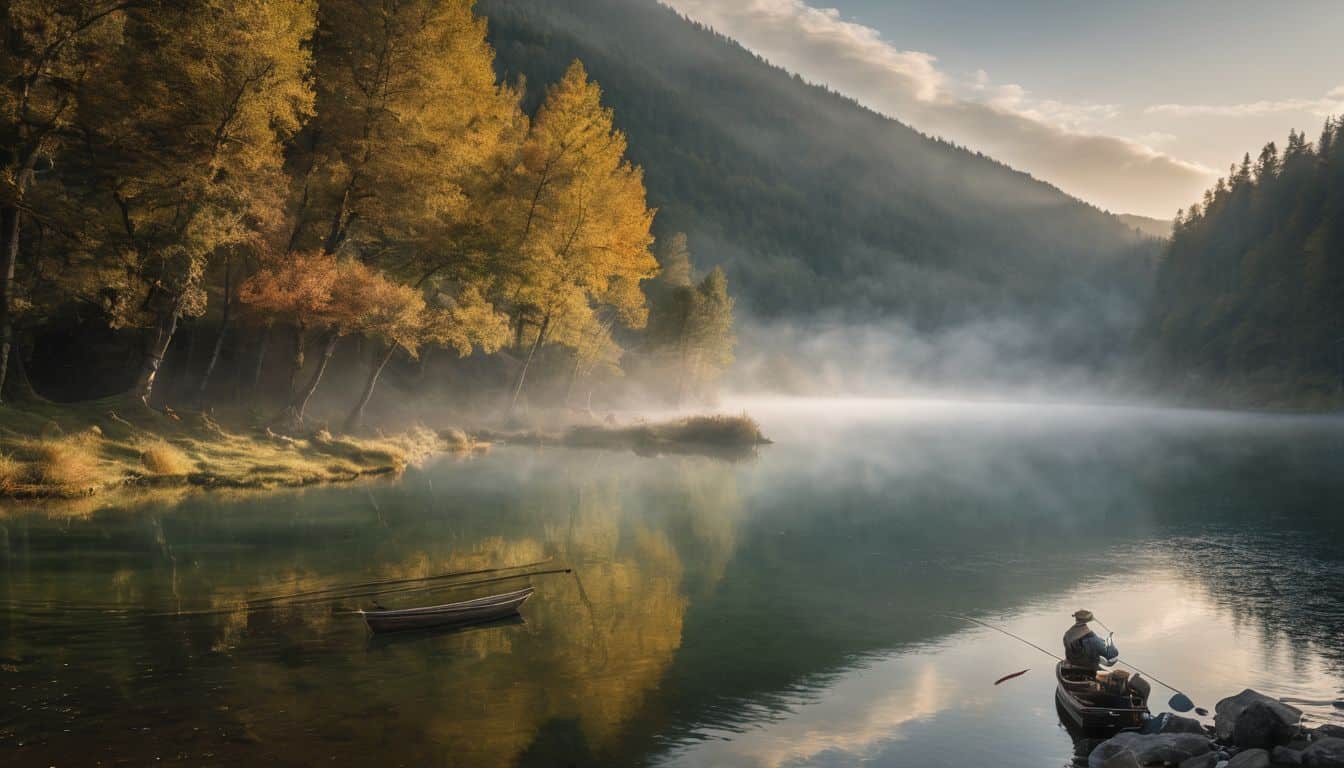
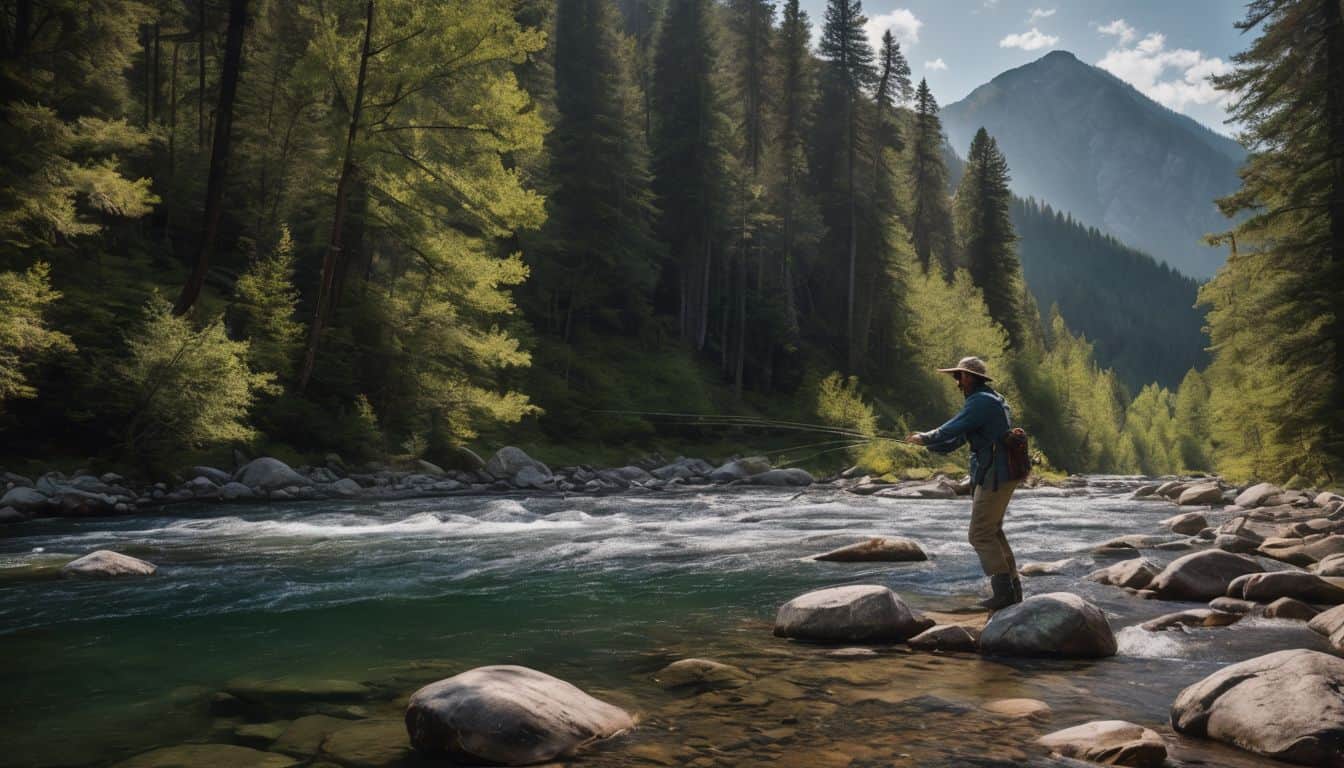
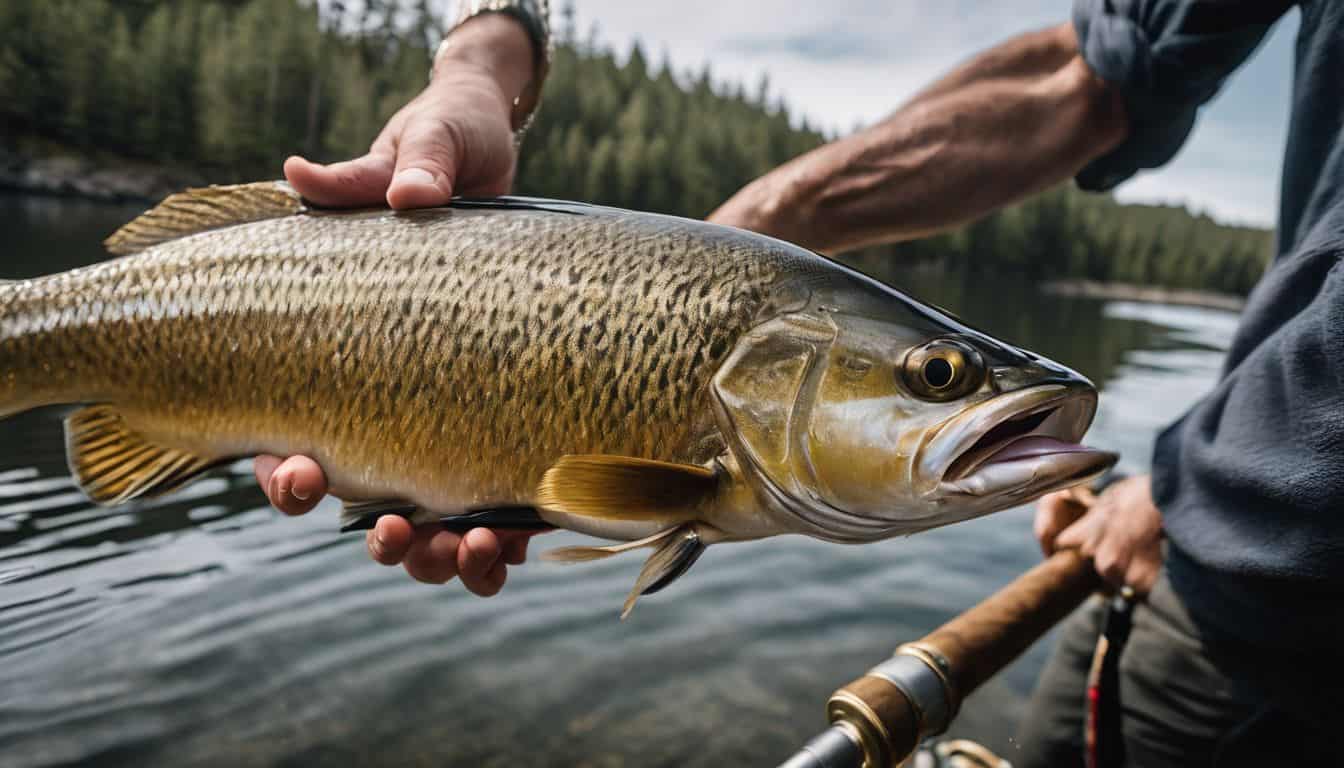
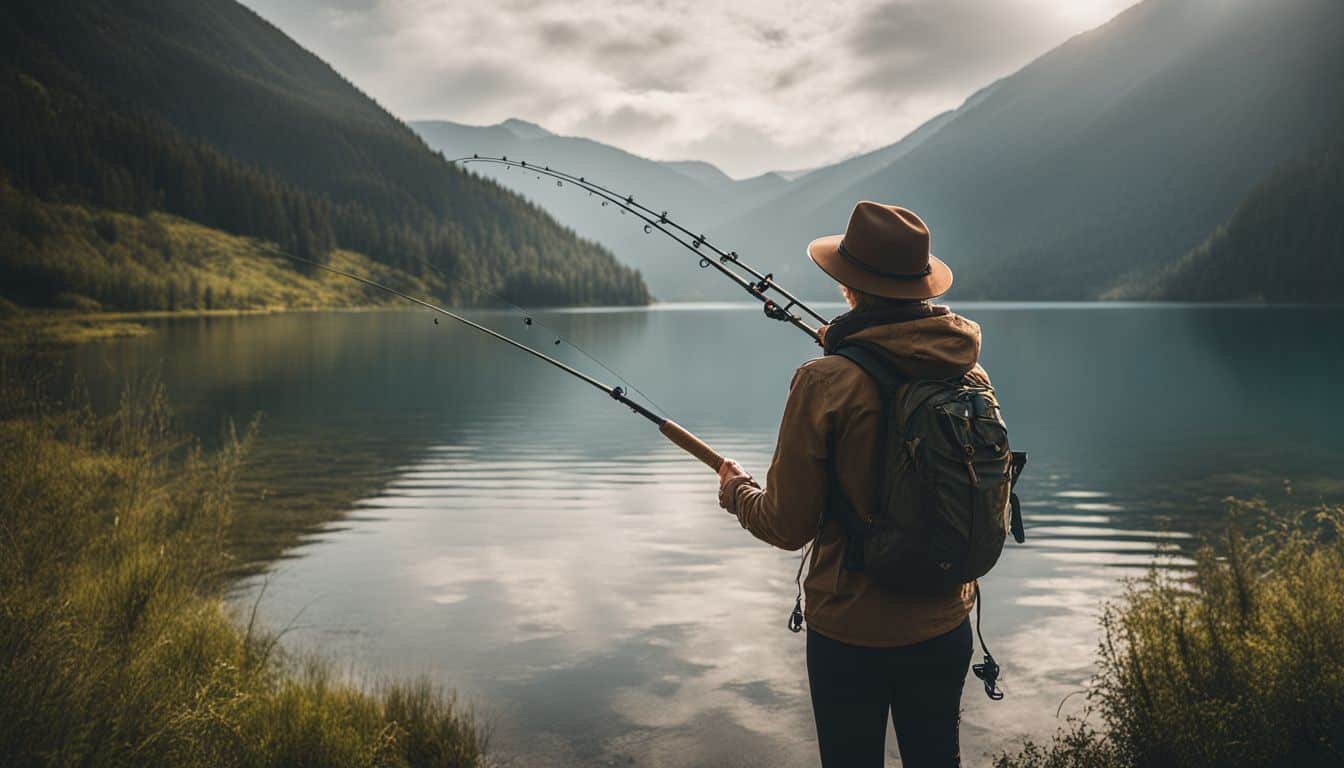
Leave a Reply